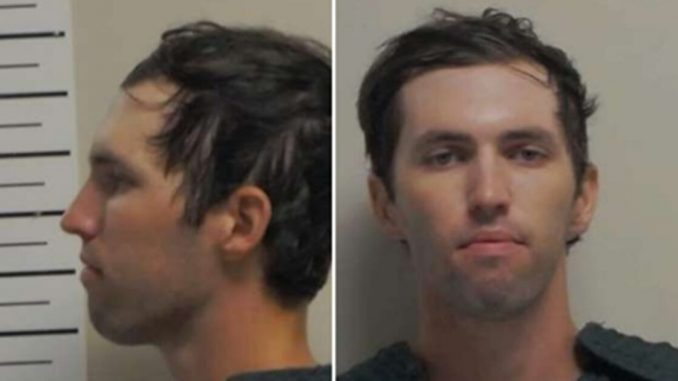
Published September 11, 2025
Tyler Robinson: The Man Accused of Assassinating Charlie Kirk
The nation continues to grapple with the shocking assassination of conservative commentator Charlie Kirk, and now the spotlight has turned to the man authorities say is responsible: Tyler Robinson. With his identity revealed, details are beginning to emerge about the alleged gunman, his actions, and the ripple effects of his arrest.
A Name Revealed
After days of speculation and investigation, law enforcement formally identified Tyler Robinson as the shooter. His capture was the result of swift police work and cooperation from his own family, who reportedly recognized his image and alerted authorities. This turn of events has underscored both the reach of modern manhunts and the critical role of community vigilance.
The Assassin’s Nest
For days after Charlie Kirk’s assassination, the nation was left with questions and speculation. Who was the man behind the sniper’s scope? What drove him to carry out such a calculated attack on one of America’s most recognizable conservative voices? On September 11th, those questions began to take shape when authorities officially named Tyler Robinson as the suspected assassin.
The reveal was not only the result of investigative work but also a striking moment of community involvement. Reports indicate that Robinson’s own father, along with a local pastor, recognized him from circulated surveillance images and immediately alerted law enforcement. In an era where families are often divided by politics, this act stood out — a father forced to make the impossible choice between loyalty to his son and duty to public safety. By choosing the latter, Robinson’s family helped authorities bring the manhunt to a close before further bloodshed could occur.
The moment Robinson’s identity was confirmed, his name and image spread rapidly across social media and news outlets. His mugshot, stark and emotionless, quickly became a centerpiece of coverage. For many Americans, this was the first time they could attach a face to the violence that had stunned the nation. For investigators, it marked the transition from mystery to accountability — a reminder that behind every political headline lies an individual who made deliberate choices.
Yet Robinson’s identification also carried symbolic weight. Naming the suspect turned him from an anonymous “shooter” into a public figure, one whose background, motives, and ideology would be scrutinized in the weeks and months ahead. In a case already loaded with political implications, the unmasking of Tyler Robinson was more than a procedural step — it was the moment the story shifted from an act of violence to a national reckoning.
Mugshot and First Impressions
When authorities released Tyler Robinson’s mugshot, it quickly became one of the most widely circulated images tied to the assassination of Charlie Kirk. The photo, stark and unembellished, froze Robinson in a moment that stripped away anonymity and left only the face of a man accused of committing one of the most politically charged killings in recent memory.
Public reaction to the mugshot was immediate. For many, it symbolized the end of uncertainty — the nameless shooter now had a name, a face, and a story that investigators were beginning to piece together. To Kirk’s supporters, the photo carried an additional weight: it humanized the threat, revealing the ordinary appearance of someone who had allegedly carried out a calculated and extraordinary act of violence. The message was unsettling — the danger did not come from a distant shadow but from an individual who might look no different from anyone else.
Commentators noted Robinson’s expression in the mugshot — calm, almost detached. To some, that suggested coldness and lack of remorse; to others, it reflected the stoic reality of a man facing the enormity of his actions. In an age where mugshots often go viral, Robinson’s image quickly became a focal point for public debate, framed alternately as evidence of radicalization, mental instability, or ideological zealotry.
The mugshot also became a canvas for narratives. Right-leaning voices pointed to it as the face of anti-conservative hatred brought to life, while more centrist outlets described it as the grim portrait of a suspect whose motives must be carefully dissected in court. Either way, Robinson’s mugshot transformed him from an unknown gunman into a figure whose identity would dominate headlines and fuel political conversation for weeks to come.
In many ways, the release of that single photo marked a turning point in the story. It shifted the nation’s gaze from the act itself to the man behind it — raising deeper questions about who Tyler Robinson was, what he believed, and how he came to play a role in one of the most shocking acts of political violence in recent history.
Ideology and Motives
If the mugshot gave Americans their first glimpse of Tyler Robinson, the evidence investigators uncovered began to reveal something far more disturbing: his intent. Among the most shocking details were the engraved bullet casings reportedly left behind in his sniper’s nest. Each bore a chilling message — phrases like “Hey fascist, catch!” and “Justice for the oppressed” — etched into the brass. These were not random scrawlings but deliberate political statements, meant to be discovered and read after the fact.
For prosecutors, the casings are a window into Robinson’s mindset. They suggest that his actions were not simply personal or impulsive but infused with symbolism. Each bullet carried with it a message of hostility, directed specifically at Charlie Kirk and what Robinson seemingly believed he represented. This evidence transforms the attack from a single act of violence into a broader political statement — one aimed at silencing a conservative voice by force.
Robinson’s alleged motives remain under investigation, but the available clues point to ideological radicalization. Online activity, writings, and conversations are being combed through by law enforcement to understand whether he acted alone, whether he was part of a wider network, or whether his views hardened in isolation. Regardless of what investigators find, the engraved bullets stand as proof that Robinson wanted the world to interpret his actions not as a crime of passion, but as an act of defiance against a political adversary.
The discovery has only deepened America’s divide. For conservatives, the engraved messages confirm their worst fears — that political rhetoric demonizing the Right is no longer just words but fuel for violence. For others, the question remains whether Robinson was an outlier driven by personal demons, or a symptom of something much larger in the nation’s fractured political climate.
At the heart of the debate is one sobering truth: ideology, when fused with violence, can turn politics into a battleground. Robinson’s motives — whether seen as the radical beliefs of a lone extremist or as part of a broader trend — serve as a grim reminder that words, ideas, and actions are inseparable when taken to their most dangerous extremes.
Community and Family Role
In the aftermath of the attack, one of the most striking details to emerge was the role Robinson’s own family played in bringing him to justice. According to reports, it was Robinson’s father and a local pastor who first recognized him from images released by authorities. Rather than shielding him or remaining silent, they made the agonizing decision to alert law enforcement — a choice that not only accelerated the investigation but may have prevented further violence.
For many Americans, this revelation added a human dimension to an otherwise chilling story. Behind the sniper’s scope and engraved bullets was not just a faceless extremist, but a son, a congregant, a member of a community who had gone down a dark and destructive path. The fact that those closest to him were willing to step forward underscored a painful truth: sometimes the responsibility to protect society means confronting those you love.
Community leaders described the pastor’s involvement as an act of courage, illustrating the role that ordinary citizens can play in stopping radicalization before it spirals further out of control. It also highlighted the tension that many faith and civic leaders face — the duty to extend compassion to the individual, while upholding moral responsibility to protect the greater good.
For Robinson’s father, the choice was especially wrenching. His decision to turn in his own son drew both sympathy and admiration. Commentators noted that it reflected not only loyalty to justice but also a stark acknowledgment of how far Robinson had strayed. In an environment where families are often torn apart by politics, this act stood as both a tragedy and a testimony — a reminder that extremism does not just target public figures, but devastates homes and communities.
In the end, Robinson’s arrest was not simply the result of police surveillance or forensic work, but of ordinary people — family, clergy, community members — who recognized the danger and acted decisively. Their courage ensured that the man accused of assassinating Charlie Kirk would face the justice system, and not slip away into obscurity.
👥 Public/Political Reactions Around Tyler Robinson
-
Statements by Officials
-
Utah Governor Spencer Cox described Robinson as having become “more political in recent years,” and said he expressed opposition to Charlie Kirk’s views in dinners with family. He called the killing a political assassination.
-
Cox also pointed to evidence: bullet casings engraved with anti-fascist slogans, chat app (Discord) messages, details about the rifle and a scope.
-
After his arrest, Cox made a broader call for reflection: “Do we escalate or do we find an off ramp?” urging young people to seek common ground rather than division or violence.
-
-
Reactions from Political Figures
-
Donald Trump praised the law enforcement work, affirmed that the suspect was in custody, and expressed the desire that Robinson be “found guilty,” also supporting the possibility of the death penalty.
-
Conservative voices have framed Robinson’s actions as especially dangerous due to political motivation. They have emphasized what they see as increasing radicalization of individuals who oppose conservative or right-wing views. Some are using the case to warn of threats to free speech and to argue for more security around political figures and events.
-
-
Media / Public Commentary
-
Many media outlets are treating Robinson’s alleged inscriptions (on casings) as central to understanding motive. The messages like “Hey, fascist! Catch!”, “Bella Ciao,” etc., are being highlighted as evidence of ideological anger.
-
There is some caution in reporting: initial claims that messages were “pro-trans” have been walked back or clarified.
-
Some outlets describe his becoming “increasingly radicalized” or politicized, including among people who knew him.
-
-
Family / Community Dynamics
-
Robinson was turned in by a family member who recognized him in FBI-released photos, with help from a youth pastor. This has become a talking point about responsibility, moral courage, and the role of families/community in preventing violence.
-
Some reports mention he was a former student (or attending a technical college) and that his behavior had shifted politically. The “before the incident” discussions with family are being reported widely.
-
-
Concerns & Criticisms
-
Many commentators are worried about political polarization and violence escalating. The fact that this was premeditated, with ideological symbols, has intensified those concerns.
-
There are calls for examining how social media, online radicalization, ideological echo chambers may have played a role. Some voices are pressing for investigation into whether any institutional failures (campus security, early warning signs) were present.
-
Some skepticism: there are also discussions about due process, about not rushing to assumptions about motives until full evidence, about the risk of using major political labels before legal confirmation.
-
-
Language & Framing
-
The term “political assassination” has been used by Governor Cox and many media outlets to describe what happened. That framing is generating debate: is it an assassination, a hate crime, terrorism, or something else?
-
Robinson’s inscriptions and messages have become symbols in this story — some see them as proof of his ideology; others caution that messaging alone doesn’t equate to full motive.
-
A drone shows the reported location of the shooter on a rooftop, at the scene where Charlie Kirk was fatally shot during an event at Utah Valley University.REUTERS
A close-up of the roof, showing indentations of where the shooter likely positioned himself and fired at Charlie Kirk.
A map of the shooter’s location during the Charlie Kirk event at UVU.
⚠️ Resulting Effects
🔹 Political & Institutional Effects
-
Shift in Rhetoric:
Once Robinson was identified, political debate hardened. Republicans leaned on the ideological inscriptions (anti-fascist, leftist messaging) to argue that the left’s rhetoric is fueling violence. Democrats responded by condemning the act but cautioning against blanket blame. -
Policy Pushes:
Some lawmakers have already floated measures for tighter security at political events, and others have renewed calls for addressing domestic extremism — from both sides of the spectrum. -
Assassination Framing:
Officials, including Utah Gov. Spencer Cox, labeled the murder a political assassination. That framing is intensifying debates about whether Robinson’s act should be prosecuted as terrorism or as murder with ideological motivation.
🔹 Law Enforcement & Security
-
FBI & local coordination praised: The quick release of photos and mugshot, plus a family member turning Robinson in, are being cited as a success in rapid suspect identification and community cooperation.
-
Security Reevaluation: Schools, universities, and political groups are reviewing how rooftops, event perimeters, and open venues are secured. Organizers are considering more controlled spaces and heightened law enforcement presence.
-
Investigative Expansion: Authorities are combing Robinson’s digital footprint (Discord chats, online activity) for evidence of broader radicalization or possible accomplices. So far, reports suggest he acted alone.
🔹 Social & Community Effects
-
Family & Community Shock: The fact that Robinson’s father and a youth pastor facilitated his hand-over to police is sparking discussions about civic duty, responsibility, and how communities should act when loved ones show signs of radicalization.
-
Public Fear: Attendees at Kirk’s event, and the wider community, are shaken by how easily a shooter could set up a sniper’s nest on campus. Some students and parents are pressing schools to adopt stricter campus security protocols.
-
Polarization Widened: Identification of Robinson has deepened divides — conservatives portraying him as a radicalized extremist tied to leftist ideologies, while liberals warn against overgeneralizing one person’s actions to an entire movement.
🔹 Media & Cultural Effects
-
Narrative Building:
-
Conservative outlets highlight Robinson’s anti-fascist engravings and opposition to Kirk’s ideas as ideological terrorism.
-
Mainstream outlets emphasize caution — reporting facts about inscriptions, but urging against premature conclusions about broader movements.
-
-
Symbolism of Engraved Bullets: These have become cultural flashpoints. “Hey fascist, catch!” and “Bella Ciao” inscriptions are being dissected in media debates, with some calling them proof of extremist ideology, others calling them “attention-seeking theatrics.”
-
Potential Martyrdom & Extremist Exploitation: Far-right commentators are using Robinson’s identification to stoke warnings of a “war on conservatives.” Fringe far-left voices risk exploiting or downplaying the case, though mainstream progressive voices are distancing themselves strongly.
🔹 Judicial / Legal Effects
-
Prosecution Path: Now that Robinson is named, the DOJ and Utah prosecutors are preparing charges that may include first-degree murder, use of a firearm in commission of a crime, and possibly terrorism enhancements.
-
Death Penalty Debate: Trump and some Republican leaders have already called for Robinson to face the death penalty — intensifying debates about punishment and deterrence.
-
Due Process Discussions: Civil liberties advocates are reminding the public that Robinson remains a suspect until proven guilty, warning against prejudging before trial.
🔮 Future Outlook based on what’s unfolding after Tyler Robinson’s identification and arrest for Charlie Kirk’s assassination:
🔹 Legal & Judicial Outlook
-
Charges & Trial: Robinson is expected to face first-degree murder and firearms charges, with possible terrorism enhancements if prosecutors emphasize political motivation.
-
Death Penalty Push: Republicans, including Trump, have already floated the death penalty — signaling a politically charged trial. Whether Utah prosecutors pursue it will be a key test.
-
Lengthy Court Process: High-profile cases like this often take months or years. Jury selection will likely be contentious, with heavy media coverage.
🔹 Political Outlook
-
Polarization Deepens: The case will likely fuel partisan clashes — conservatives framing it as proof of violent radicalization on the left, while Democrats caution against politicizing one individual’s actions.
-
Election Issue: Expect political violence and security at rallies to become a 2026 election talking point, especially among Republicans pressing a “law and order” message.
-
Legislative Proposals: We may see calls for new security funding for public events, stricter monitoring of domestic extremism, or new laws on political assassinations.
🔹 Security & Law Enforcement Outlook
-
Event Security: Outdoor political events may shift to stricter controlled venues, with rooftop checks, surveillance drones, and heavier police presence.
-
Community Reporting: Robinson was caught partly because his father and a pastor turned him in. Expect campaigns urging the public to report signs of radicalization.
-
Digital Radicalization Focus: Authorities will likely dig deeper into Robinson’s online activity. Platforms like Discord and Reddit may face new pressure to cooperate against extremist content.
🔹 Social & Cultural Outlook
-
Symbolism of the Case: Robinson’s engraved bullets (“Hey fascist, catch!” etc.) will continue to be referenced in debates about political hate and extremism.
-
Fear Among Public Figures: Influencers, activists, and politicians may rethink appearances at open venues. Some could limit in-person tours.
-
Narrative Battles: Competing portrayals — lone disturbed individual vs. ideologically motivated assassin — will shape how history remembers this event.
🔹 Risks Ahead
-
Retaliation or Copycats: Security experts warn that high-profile political killings can inspire other extremists.
-
Erosion of Trust: If the case is mishandled or politicized too heavily, it could deepen mistrust in institutions like the DOJ, FBI, or courts.
-
Escalation: If either side uses the case to rally supporters aggressively, it could inflame tensions, possibly sparking further violence or unrest.
🧩 Bottom Line:
The arrest of Tyler Robinson has brought answers but not closure. His name, face, and actions now stand at the center of a national reckoning over political violence in America. From the sniper’s nest to the engraved bullets, each detail of the case underscores how far ideological hostility can go when words turn into weapons.
Yet this story is not just about Robinson. It is about the family who chose duty over silence, the community that stood firm against extremism, and a nation forced to confront its own deep divides. For some, Robinson’s actions will forever symbolize the dangers faced by outspoken conservatives; for others, they serve as a warning of how radicalization can consume anyone.
What remains clear is that the path forward will test America’s ability to uphold justice while resisting the temptation to let violence define its politics. Whether Robinson’s trial becomes a moment of accountability or another flashpoint in the culture war will depend not only on the courts, but on how the country chooses to respond to the deeper tensions his act has laid bare.
SOURCES: THE GATEWAY PUNDIT – Mugshot of Charlie Kirk Accused Assassin Tyler Robinson Released, Stone-Faced Suspect Stares Down Camera in Chilling Image
THE NEW YORK POST – Mugshot of Charlie Kirk Accused Assassin Tyler Robinson Released, Stone-Faced Suspect Stares Down Camera in Chilling Image
RELATED: FBI Releases Photos of New Person of Interest in Charlie Kirk Assassination
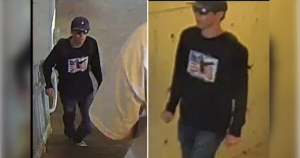
Published September 11, 2025
Orem, Utah — In the hours after conservative activist Charlie Kirk was fatally shot at Utah Valley University on September 10, 2025, law enforcement agencies mobilized to establish the identity of the suspect. On September 11, the FBI and the Utah Department of Public Safety released surveillance images of a person of interest, appealing to the public for help. The suspect remains at large.
What the Photos Show
The released images provide several distinguishing features:
-
The individual appears to be a college-aged male, dressed in a long-sleeve black shirt with an American flag motif on the front.
-
He is also wearing dark jeans, a baseball cap, and sunglasses.
-
In one image he is walking up stairs, carrying a black backpack.
-
Investigators also noted that the person left behind physical evidence at the rooftop location believed to be the firing point: palm prints, footwear impressions (including shoe-type details), and forearm imprints.
Scene, Timeline & Forensics
-
Charlie Kirk was speaking at a “Prove Me Wrong” event, part of his “American Comeback” tour, at the Losee Center on the campus of Utah Valley University. He was shot around 12:20 pm local time, apparently from a rooftop across from the speaking venue.
-
After firing the shot, the suspect is seen in video running across the roof, then scaling down and fleeing toward wooded areas. A high-powered bolt-action rifle was later recovered from nearby woods.
-
So far, law enforcement has not publicly identified a motive. Officials describe the killing as “targeted,” with political overtones given Kirk’s activism. Governor Spencer Cox called it a “political assassination.” The Washington Post+2People.com+2
Public Appeal & Challenges
-
The FBI is offering a reward up to $100,000 for information leading to the identification and arrest of the person of interest.
-
Over 7,000 tips have been received so far, according to Utah state officials.
-
Investigators are relying on surveillance video, public video or camera footage, and witness accounts. The released images are grainy and partially obscured (hat, sunglasses), making positive identification difficult.
Implications & Reactions
-
The release of these photos serves multiple purposes: it can help generate leads from the public, possibly prompt recognition, and put pressure on the suspect if he is observing the fallout.
-
At the same time, it raises questions about political violence in America. Charlie Kirk’s death has already provoked wide condemnation across partisan lines. Officials warn about the chilling effect of such attacks.
-
There is also concern about the accuracy and potential misuse of enhanced or AI-manipulated versions of the released images. Some social media users have attempted to “upscale” or clarify the grainy photos via AI tools — but experts caution that such enhancements can introduce false features or misleading details.
The FBI is seeking the public’s help to find the assassin who killed Charlie Kirk.
The suspected shooter allegedly shot Kirk from roughly 200 yards away.
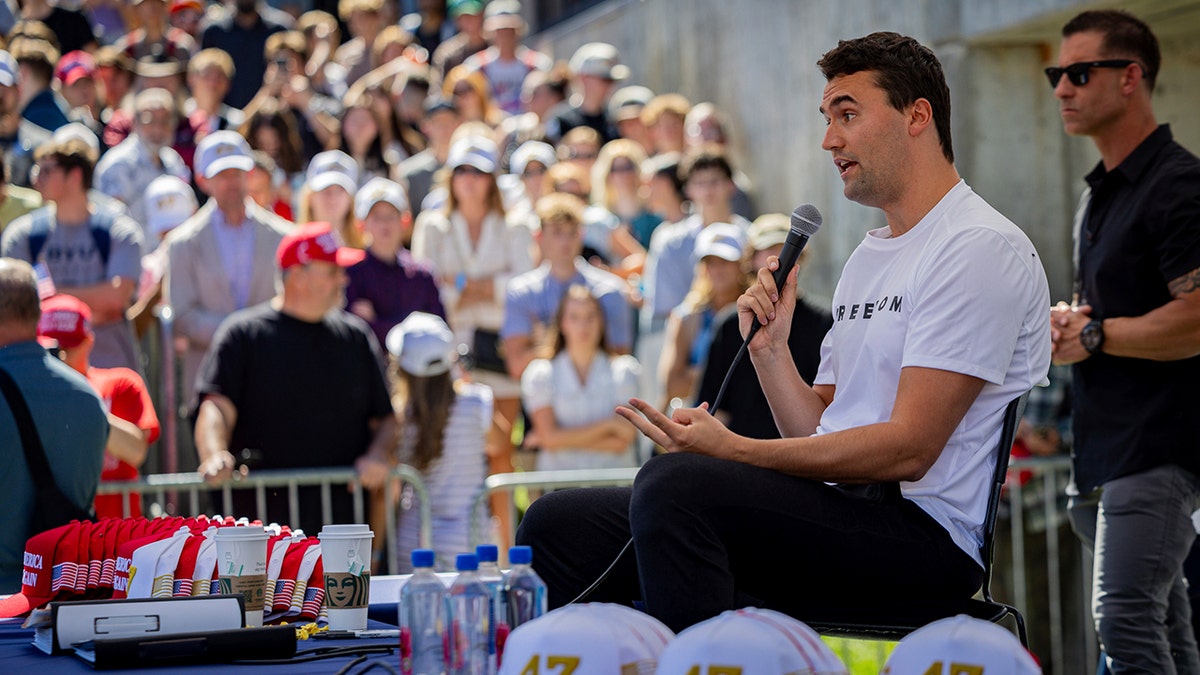
Charlie Kirk speaks before he is shot during Turning Point’s visit to Utah Valley University in Orem, Utah, Wednesday, Sept. 10, 2025. (Tess Crowley/The Deseret News via AP)
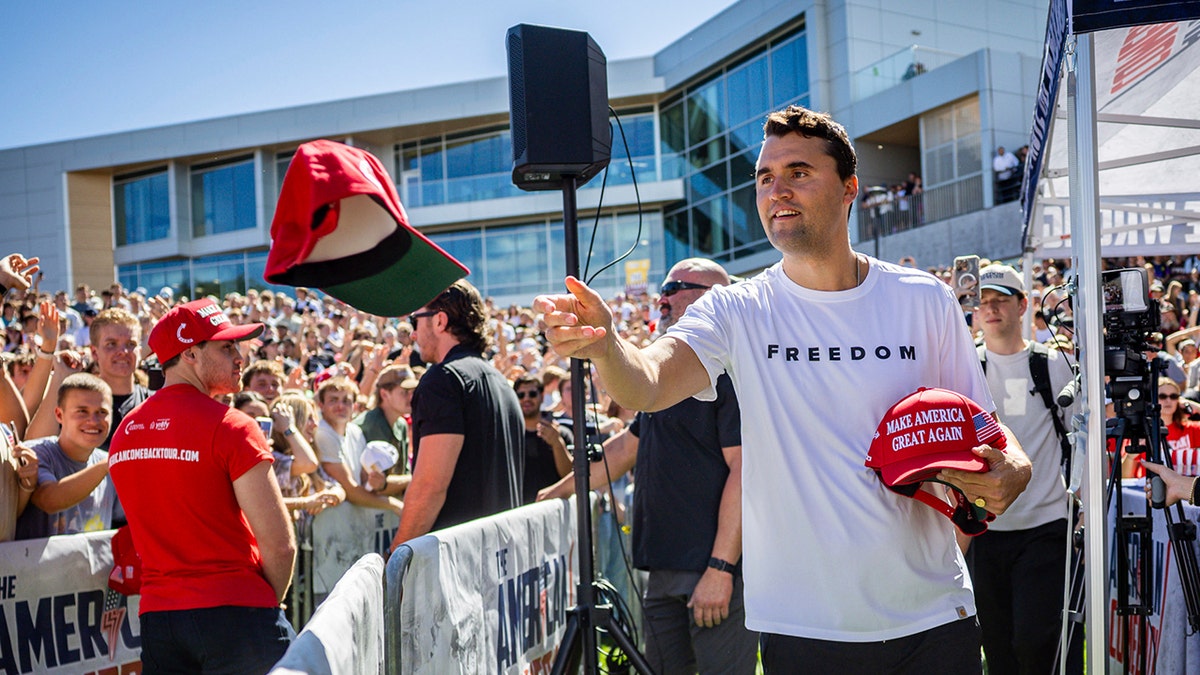
Charlie Kirk hands out hats before speaking at Utah Valley University in Orem, Utah, Wednesday, Sept. 10, 2025. (Tess Crowley/The Deseret News via AP)
🧩 Bottom Line:
The photos of the person of interest in Charlie Kirk’s assassination represent a crucial turning point in the investigation. They provide physical clues that may lead to his identification, but the challenges are considerable: obstruction of identifying features, a suspect still at large, and a climate where political violence draws national attention. Whether these images will yield the break investigators hope for depends in large measure on public assistance, the speed and rigor of forensic work, and continued cooperation among local, state, and federal agencies.
SOURCES: THE GATEWAY PUNDIT – FBI Releases Photos of New Person of Interest in Charlie Kirk Assassination
FOX NEWS – Person of interest in Charlie Kirk assassination pictured in photos released by FBI
FINANCIAL TIMES – FBI releases images of ‘person of interest’ in Charlie Kirk shooting







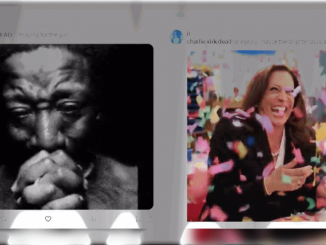
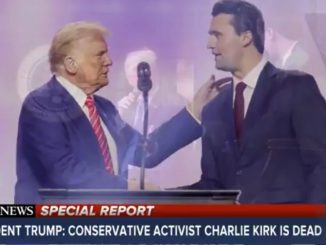

Be the first to comment